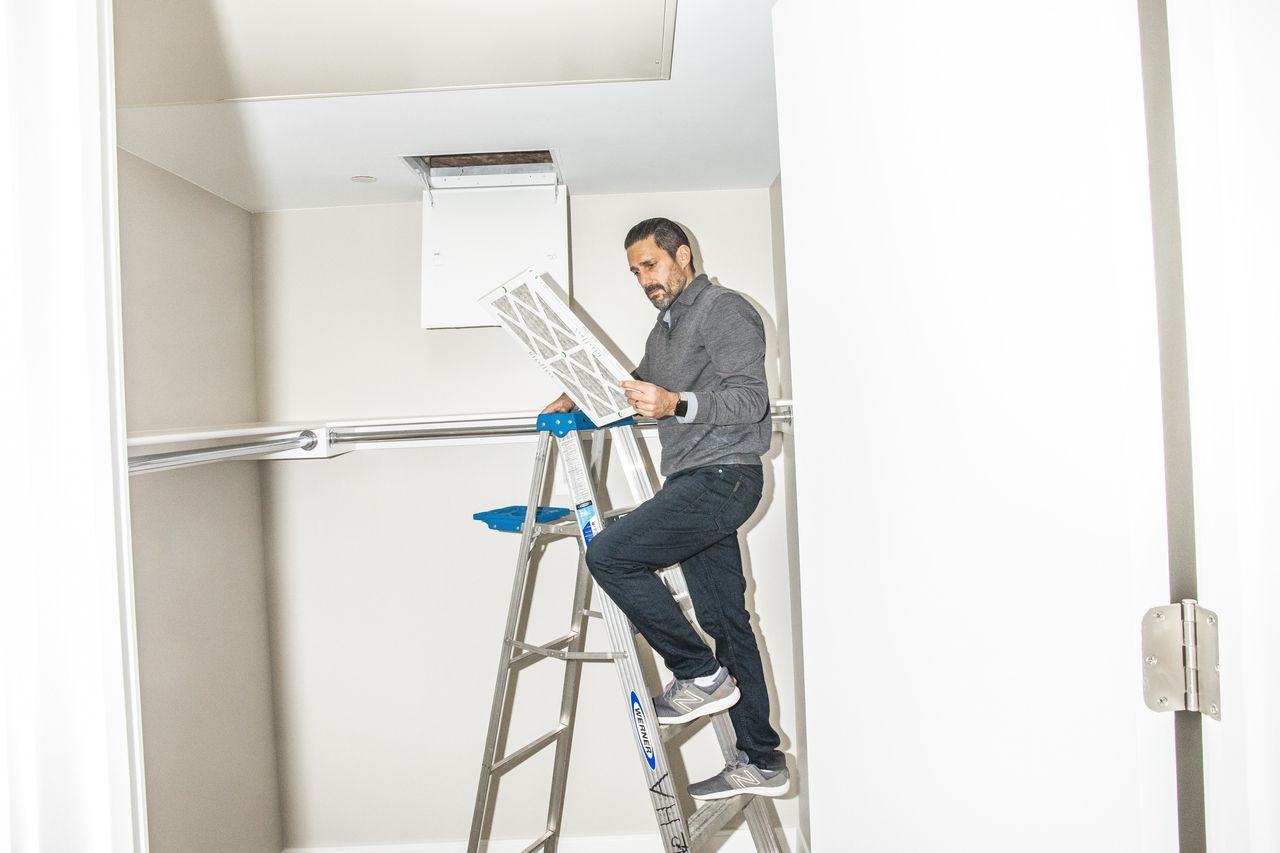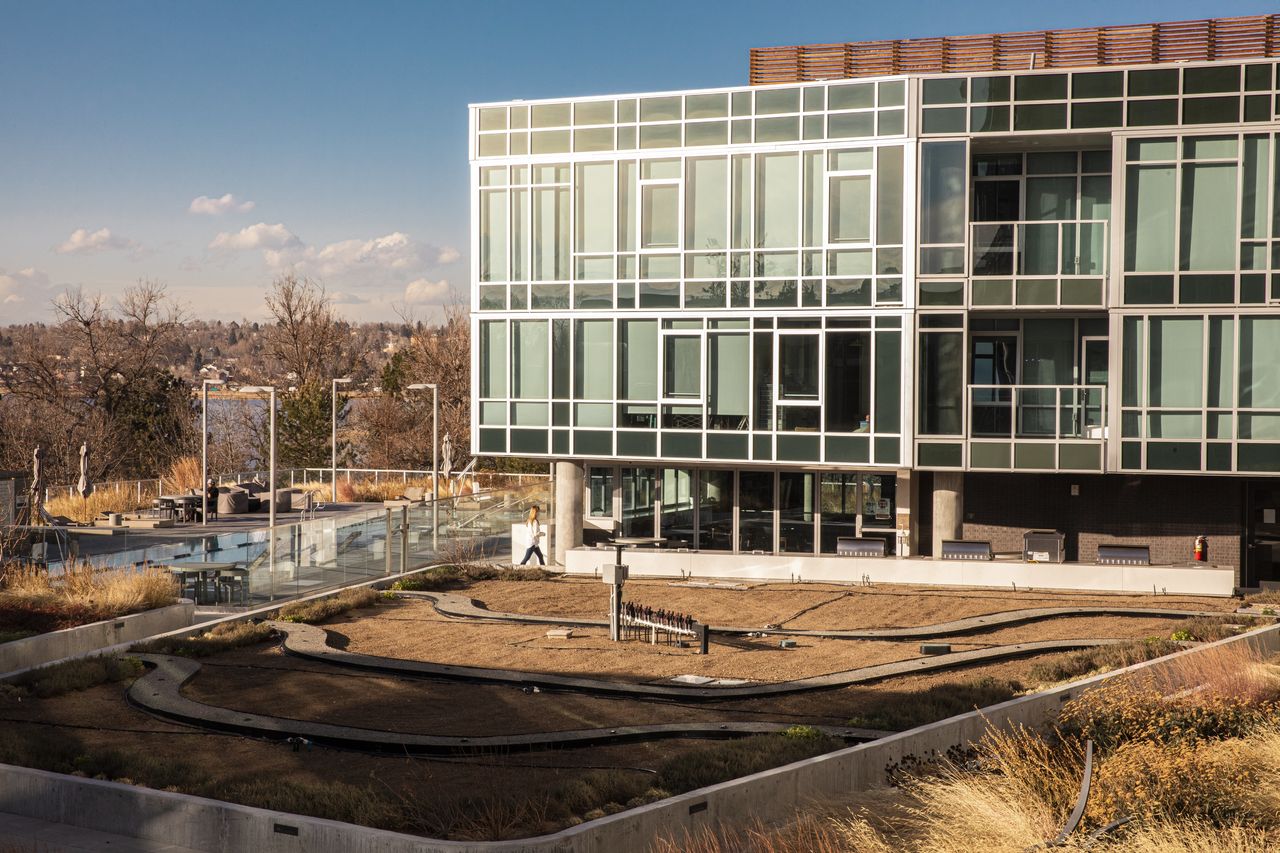Clean Air: The Next Luxury Apartment Perk
Technology that seamlessly fixes air quality will become widespread in homes by 2030, real-estate developers say. Will homebuyers care once the pandemic subsides?
Technology that seamlessly fixes air quality will become widespread in homes by 2030, real-estate developers say. Will homebuyers care once the pandemic subsides?
When buyers of real-estate developer John Roe’s seven condos walk into their new Manhattan homes sometime after May next year, Mr Roe wants them to breathe deep and feel good about it. That’s because he has spared no expense on air quality.
The boutique building, called Charlotte of the Upper West Side, is being constructed with an airtight external shell. Fresh air, tempered, filtered and then treated with ultraviolet light, will be constantly pumped into each room, while the same amount of used air is extracted. If a resident is worried—say they muttered “God bless you” to a sniffly dinner guest a worrisome number of times last night—they can boost the air exchange in their unit by 120%. Buyers of Mr Roe’s properties will be well aware of how special their air is: Marketing materials, which typically might describe the amenities and luxe touches, include elaborate diagrams and animations describing how the air system works.
The cost of all this magnificent air? The cheapest unit will list at $11 million (A$14.5 million), while penthouses will hit $18 million (A$23.8 million), Mr Roe says. Those price tags are largely due to the location, size and luxury finishes of the units, but the air system wasn’t cheap, either, Mr Roe says. Still, like everything else in real estate that was once the preserve of the elite—think roof decks, gyms, stainless steel—these technologies were already on a path of increased adoption and lower cost. Covid-19 has poured accelerant on the trend.
Executives at some of the country’s largest developers say they believe that by 2030 such systems will be commonplace in all residential development. Buildings with a high degree of mechanical ventilation and energy efficiency will be routine. Indoor sensors will identify when air quality has dropped and automatically increase ventilation. Systems will aim to mitigate outdoor air problems, such as general pollution or smoke from bushfires, as well as indoor threats, such as a sick resident, a burned pot roast or overenthusiastic spraying of lemon polish. Homes will feature dynamic air systems with a “crisis mode” that can upgrade filtration and run a disinfection protocol. Once the threat has been neutralised, systems will return to status quo to save energy.
At the same time, questions remain about what technology is most effective and worth the cost in both dollars and energy use. Will home buyers care about air quality when Covid-19 is no longer affecting daily life?
Scott Walsh, a vice president and project director for Lendlease, a global real estate and investment firm, says he believes that, armed with a new understanding about air quality, consumers will demand homes that improve it.
Already, developers are drawing up blueprints with a focus on fresh air flow, filtration and purification.
“Air quality is now front of mind for our buyers,” says Elisa Orlanski Ours, chief planning and design officer at Corcoran Sunshine, the new development wing of the Corcoran Group real-estate brokerage. Her developer clients are currently exploring how to filter and disinfect the air in both public and private spaces, she says.
The most cutting edge technology today, which will gradually become less expensive and more widespread, is an “energy recovery ventilator,” says Andrea Mancino, executive vice president of New York for Bright Power, an energy management consultant. These are ventilation systems that recapture energy from hot air leaving the building to heat or cool the filtered fresh air going back in.
Air quality experts believe that the wide adoption of MERV 13 or 14 air filters—which the ASHRAE trade group, formerly known as the American Society of Heating, Refrigerating and Air Conditioning Engineers, recommended in April—will be sufficient to manage major particle-related problems. MERV, or “minimum efficiency reporting value,” describes the efficiency of a filter at trapping particles of different sizes.
The pandemic has brought a jolt of interest to systems that go beyond filtering undesirable particles out of the air. Instead, they act upon particles to destroy them, through ultraviolet light, UV photo oxidation, ionization and other tactics. Scientific studies are expected to shed light on which methods and systems are most effective in a home.
“All these products work somewhat differently, and for a lot of these new products, we don’t have good studies to know how well they actually work,” says Max Sherman, the residential team leader of ASHRAE’s epidemic task force.
Gandolfo Schiavone, president of Sav Mor Mechanical, an HVAC company, says that since July his company has installed over 300 air purifiers on buildings’ existing ventilation systems around the New York area. Blueair, a Swedish maker of portable air purifiers that Unilever bought in 2016, has seen triple-digit growth this year, says chief product officer Jonas Holst.
Mr Holst believes that the U.S. will eventually buy air purifiers at the same rate as Asia. “In the U.S., the penetration rate for purifiers is about 15%. In Japan and Korea, about 40% of homes have an air purifier,” he says.

Sensor technology that analyzes indoor air quality is already in use in a handful of new luxury homes. Delos, which founder Paul Scialla describes as a “wellness real estate and technology company,” sells a system that monitors and mitigates air, water and light quality. Through an app, homeowners can see when their air quality drops below optimal standards; the built-in system then triggers ventilation.
In the near future, sensor-based technology that not only detects problems, such as cleaning chemicals in the air, but also responds by, say, automatically ventilating a space, will become widespread, as more manufacturers create better and cheaper systems, contractors learn about them and homeowners demand them, predicts Ryan Donovan, senior category manager for indoor air quality at Ferguson Enterprises, a seller of plumbing and HVAC products. Systems will also become more sensitive: “In 10 years, I do think it’s possible that the sensor will tell you there’s a flu virus,” Mr Donovan says.
Insiders compare the current state of the air quality industry to the early days of the organic food movement, before a U.S. Department of Agriculture standard was formalised. Today, there are a handful of voluntary certifications that speak to air quality, including Passive House and the WELL Building standard, founded by Mr Scialla’s Delos. Whether such labelling will eventually cohere into a government-backed standard, or lead to regulation, isn’t known.
At Lakehouse, a 196-unit condo building in Denver, developer Brian Levitt designed features he hopes will help him achieve the WELL certification “gold” level, he says. The apartments are for sale for US$499,000 to US$1.825 million. Mr Levitt says that residents will get their own ventilated air, furnishings were “off-gassed” in a warehouse for months, and he used low VOC paints and glues. “Buyers may not be willing to pay a premium for WELL yet, but we do think it increased our sales absorption,” and lowers resistance to multifamily living, says Mr Levitt, president of NAVA Real Estate Development.

Air quality is a concern across the price spectrum. Michael Bohn, senior principal at Studio One Eleven, an architecture and design firm based in Long Beach, Calif., redesigned an affordable-housing complex in Santa Ana, Calif., after the pandemic struck. It will now include MERV 14 filters and balconies for each unit.
Indoor air quality cannot widely improve until the building industry finds ways to ventilate, heat, cool, filter and purify air in an energy efficient way. Newly-constructed buildings have the best shot, says Dr Sherman: They can be designed to avoid leakage of air and can use the most efficient mechanical systems. Retrofitting existing buildings while meeting green building standards that will eventually become law is harder, says Derek Tynan, a project engineer with Efficient Energy Compliance, a consulting firm for commercial buildings in New York.
Developers and engineers believe one of the answers lies in dynamic systems that can boost air quality mitigations in times of crisis—thus using more energy—and then reset to a more energy-efficient setting when it is safe to do so.
It’s not clear whether pandemic shock will lead to lasting change. Dan Holohan, an author of 24 books about the steam heat industry, has studied engineering manuals during and after the 1918 flu pandemic. Back then, there was lots of discussion of “the fresh air movement,” but once it was all over, so was any mention of infectious disease, says Mr Holohan.
“Once we get vaccinated, people will forget this ever happened and get back to doing the cheapest thing,” he says.
 Copyright 2020, Dow Jones & Company, Inc. All Rights Reserved Worldwide. LEARN MORE
Copyright 2020, Dow Jones & Company, Inc. All Rights Reserved Worldwide. LEARN MORE
What a quarter-million dollars gets you in the western capital.
Alexandre de Betak and his wife are focusing on their most personal project yet.
Owned by Richard Outten, who’s penned screenplays for films including “Pet Sematary Two” and “Lionheart,” this is only the third time the home has been on the market
A Mid-Century Modern home in Carmel, California, hit the market on Friday for just the third time in 70 years with a listing price of $4.25 million.
Located in the community of Carmel Highlands, the house is just steps from the coastline and comes with private beach access, according to the listing with Tim Allen of Coldwell Banker Realty in Northern California. Allen was not immediately available for comment.
The property last changed hands in 2010 when Hollywood screenwriter Richard Outten bought it for $990,000, public records show. Outten penned the screenplays for the 1992 movie “Pet Sematary Two” and the 1987 film “Lionheart,” and created the story for the 2012 “Journey to the Center of the Earth” sequel, “Journey 2: The Mysterious Island.” He was not immediately available for comment.
Built in 1953, the home’s mid-century charm has been preserved over the years while still being updated for modern living. Interior details include wood paneling, exposed-brick walls and beamed ceilings.
The single-level house has 1,785 square feet, which includes three bedrooms and two full bathrooms. Though not directly on the water, large windows flanking the adobe-brick, wood-burning fireplace look out at the ocean.
Sliding glass doors create a seamless flow between indoor and outdoor living. Outside, there’s a large patio surrounded by lush landscaping, and there are also meandering paths through sustainable succulent gardens, according to the listing.
In addition to its close proximity to the beach, the home is a 10-minute walk from downtown Carmel-by-the-Sea.
As of July, the median list price in Carmel is $3.1 million, up 8% from last year, even as active listings have increased 50% year over year, according to data from Realtor.com.